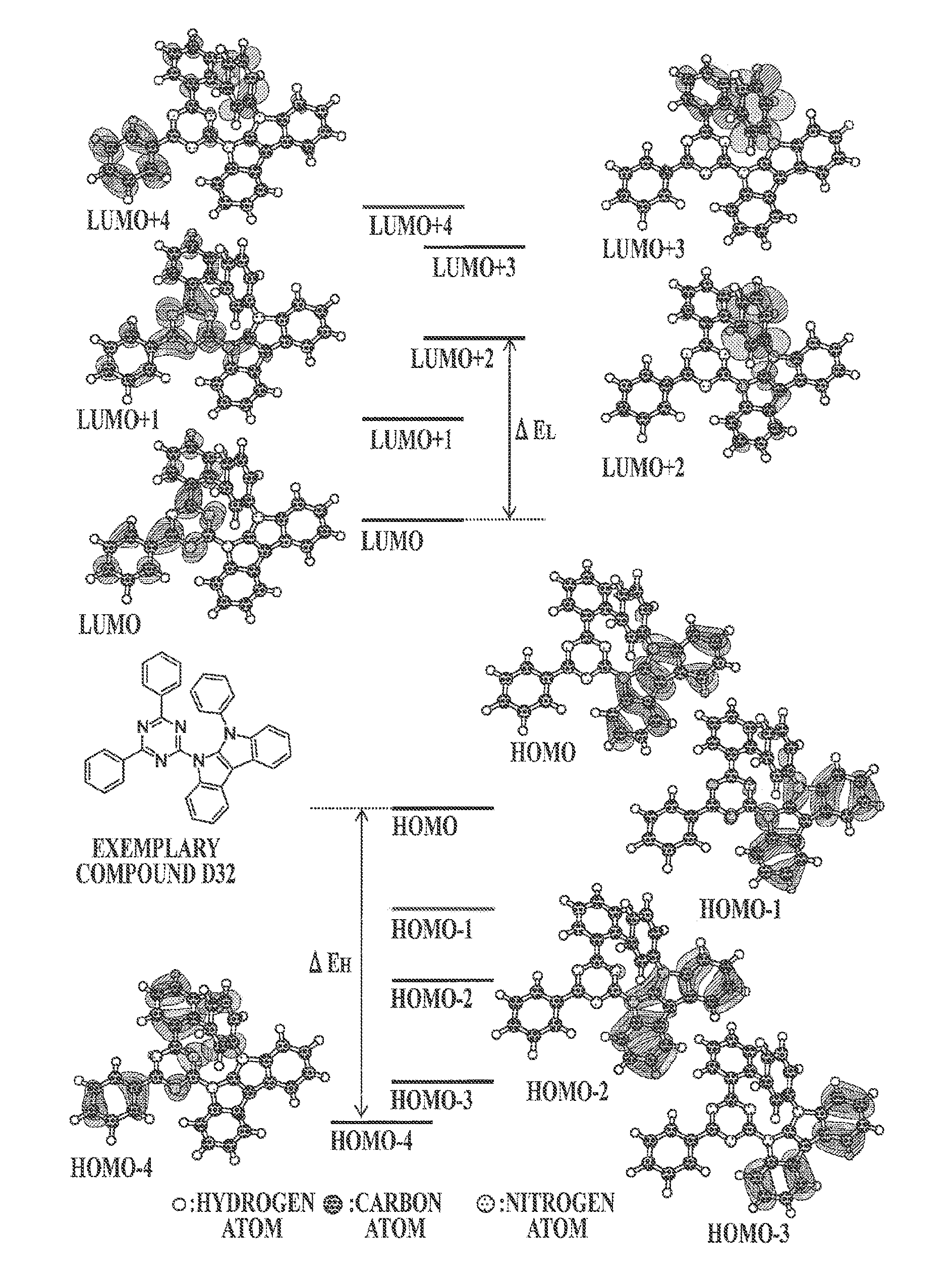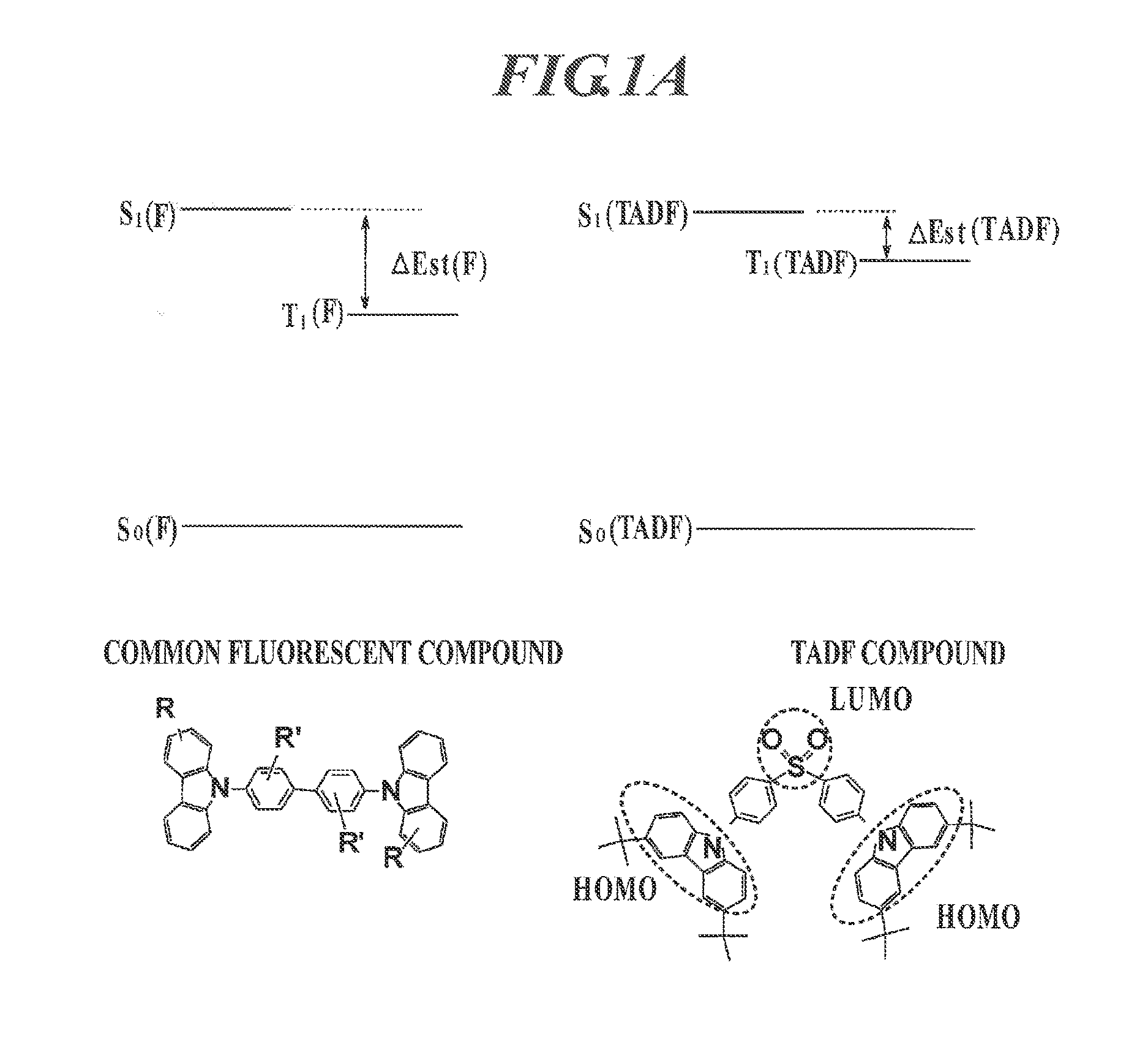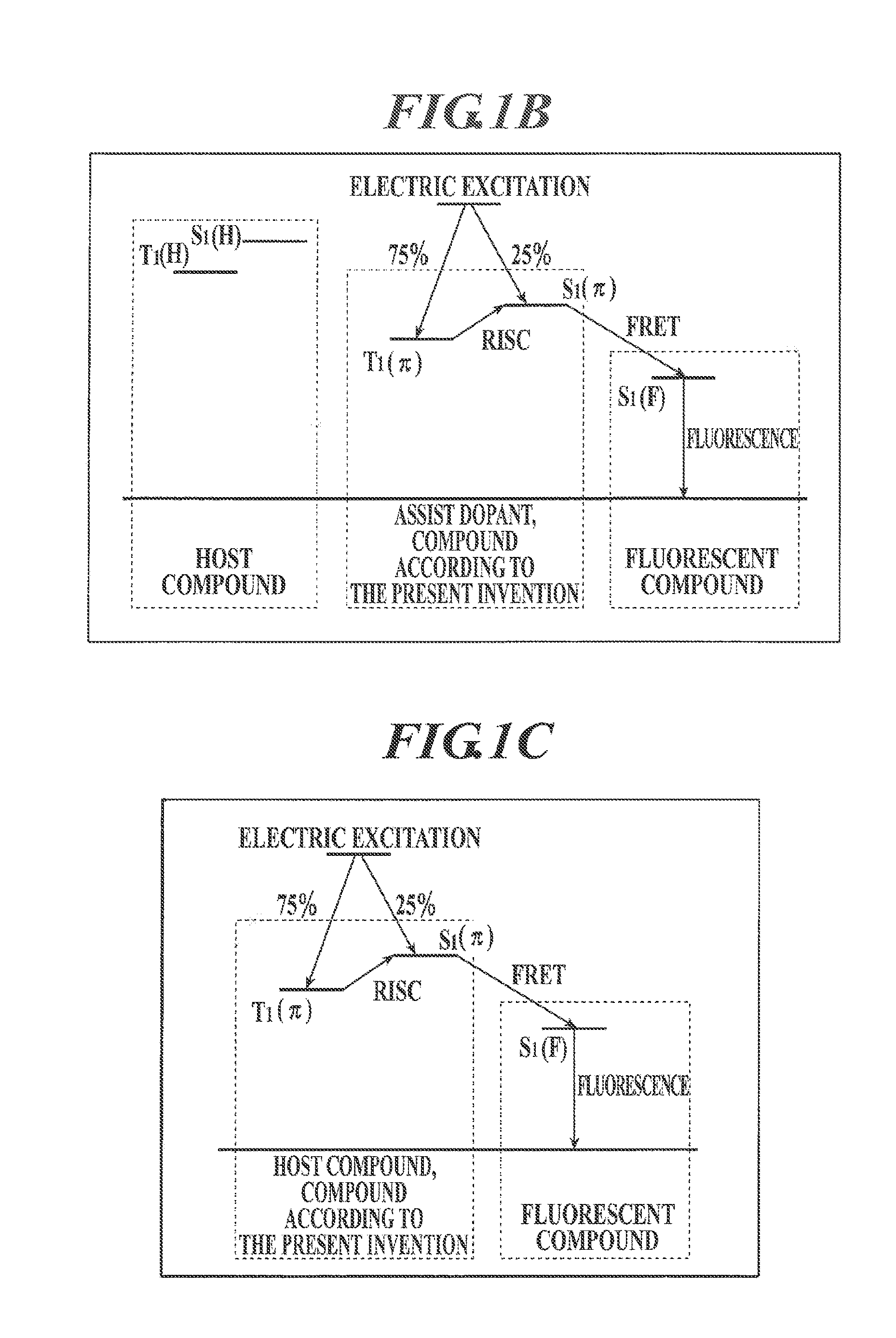Organic electroluminescence element, display device, illumination device, and light-emitting composition
a technology of electroluminescent elements and display devices, applied in the direction of luminescent compositions, organic semiconductor devices, chemistry apparatuses and processes, etc., can solve the problems of blue light-emitting elements, which generate excitons having high energy, and may not achieve the compatibility between high emission efficiency and long operational life, so as to achieve stable operation over a long period of time, improve the effect of operational life and high durability
- Summary
- Abstract
- Description
- Claims
- Application Information
AI Technical Summary
Benefits of technology
Problems solved by technology
Method used
Image
Examples
example 1
Preparation of Organic EL Element 1-1
[0518]An indium tin oxide (ITO) film having a thickness of 100 nm was deposited on a glass substrate with dimensions of 100 mm by 100 mm by 1.1 mm (NA45, manufactured by AvanStrate Inc. (former company name: NH Techno Glass)) and was patterned into an anode. The transparent support substrate provided with the transparent ITO electrode was ultrasonically cleaned in isopropyl alcohol, dried with dry nitrogen gas, and then subjected to UV ozone cleaning for five minutes.
[0519]A solution of 70% poly(3,4-ethylenedioxythiophene)-poly(styrene sulfonate) (PEDOT / PSS; Baytron P Al 4083, manufactured by Bayer) in pure water was applied by spin coating onto the transparent support substrate at 3,000 rpm for 30 seconds. The resultant thin film was dried at 200° C. for one hour, to form a hole injecting layer having a thickness of 20 nm.
[0520]The transparent support substrate was fixed to a substrate holder in a commercially available vacuum vapor deposition a...
example 2
Preparation of Organic EL Element 2-1
[0531]An indium tin oxide (ITO) film having a thickness of 100 nm was deposited on a glass substrate with dimensions of 100 mm by 100 mm by 1.1 mm (NA45, manufactured by AvanStrate Inc. (former company name: NH Techno Glass)) and was patterned into an anode. The transparent support substrate provided with the transparent ITO electrode was ultrasonically cleaned in isopropyl alcohol, dried with dry nitrogen gas, and then subjected to UV ozone cleaning for five minutes.
[0532]The transparent support substrate was fixed to a substrate holder in a commercially available vacuum vapor deposition apparatus. Subsequently, 1,4,5,8,9,12-hexaazatriphenylenehexacarbonitrile (HAT-CN) (200 mg), 4,4′-bis[N-(1-naphthyl)-N-phenylamino]biphenyl (α-NPD) (200 mg), 3,3-di(9H-carbazol-9-yl)biphenyl (mCBP) (200 mg), comparative compound C2 (H-146) (200 mg), and 1,3,5-tris(N-phenylbenzimidazol-2-yl)benzene (TPBi) (200 mg) were placed in different molybdenum resistive hea...
example 3
Preparation of Organic EL Element 3-1
[0545]An indium tin oxide (ITO) film having a thickness of 100 nm was deposited on a glass substrate with dimensions of 100 mm by 100 mm by 1.1 mm (NA45, manufactured by AvanStrate Inc. (former company name: NH Techno Glass)) and was patterned into an anode. The transparent support substrate provided with the transparent ITO electrode was ultrasonically cleaned in isopropyl alcohol, dried with dry nitrogen gas, and then subjected to UV ozone cleaning for five minutes.
[0546]A solution of 70% PEDOT / PSS in pure water was applied by spin coating onto the transparent support substrate at 3,000 rpm for 30 seconds. The resultant thin film was dried at 200° C. for one hour, to form a hole injecting layer having a thickness of 20 nm.
[0547]The transparent support substrate was fixed to a substrate holder in a commercially available vacuum vapor deposition apparatus. α-NPD (200 mg) was placed in a molybdenum resistive heating boat, CBP (200 mg) was placed i...
PUM
| Property | Measurement | Unit |
|---|---|---|
| energy level | aaaaa | aaaaa |
| energy level | aaaaa | aaaaa |
| internal quantum efficiency | aaaaa | aaaaa |
Abstract
Description
Claims
Application Information
 Login to View More
Login to View More - R&D
- Intellectual Property
- Life Sciences
- Materials
- Tech Scout
- Unparalleled Data Quality
- Higher Quality Content
- 60% Fewer Hallucinations
Browse by: Latest US Patents, China's latest patents, Technical Efficacy Thesaurus, Application Domain, Technology Topic, Popular Technical Reports.
© 2025 PatSnap. All rights reserved.Legal|Privacy policy|Modern Slavery Act Transparency Statement|Sitemap|About US| Contact US: help@patsnap.com



